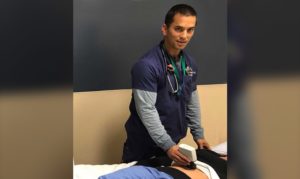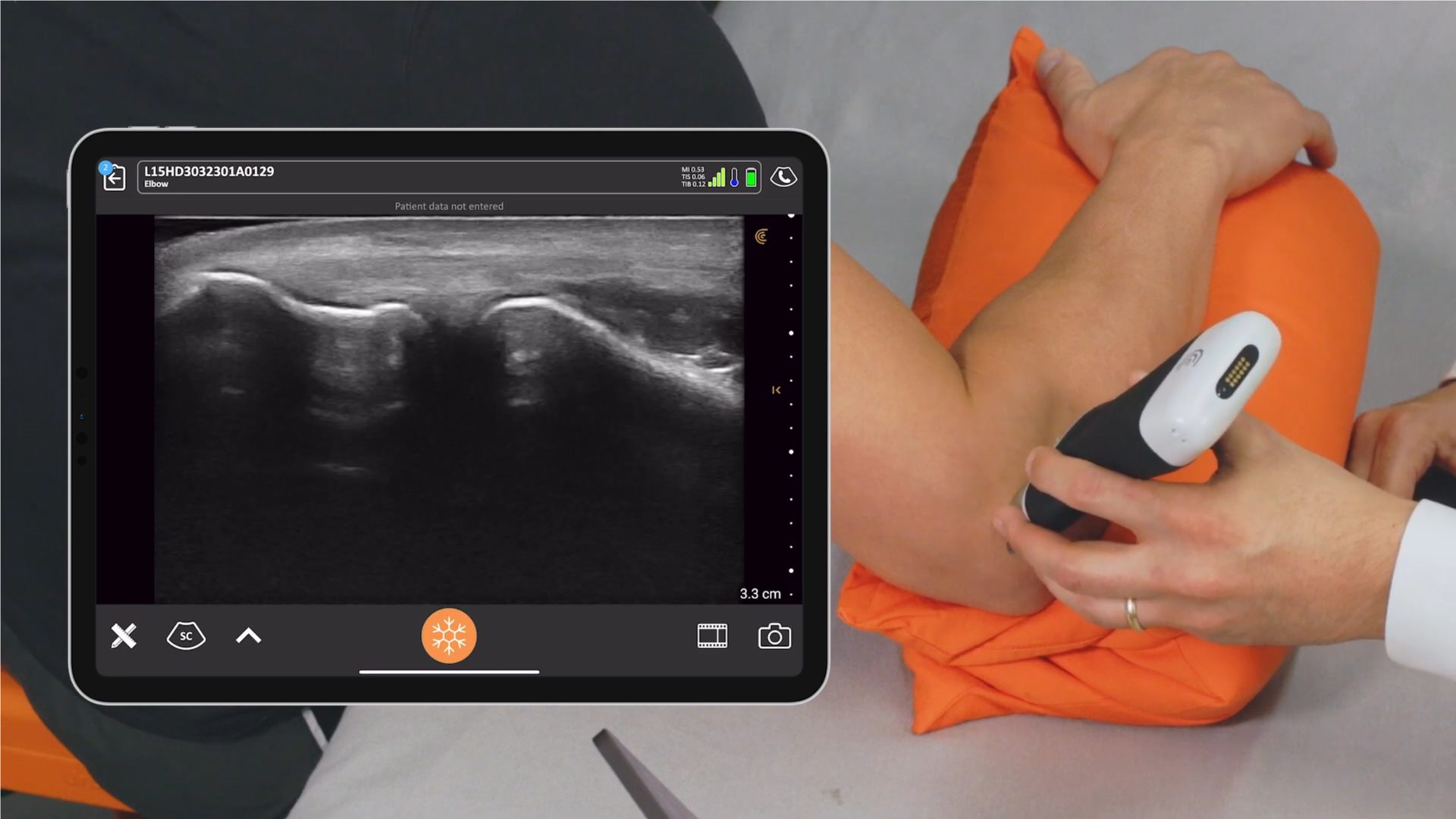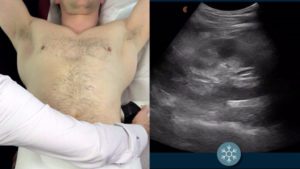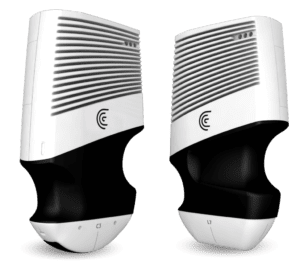By Martin Pham-Dinh, MD
This article has been translated into English from French and edited from a post that first appeared on Association Des Medecins D’Urgence du Quebec.
I have been practicing emergency medicine for 17 years, and have performed ultrasound since 2003. I currently work in two urban emergency departments in Quebec, Canada: Hull and Gatineau.
Several things have changed since “the good old days” when I used to move my radiology patients to borrow the ultrasound machine on evenings and weekends. The most recent technological developments have been ultra-portable devices. I like the term POCUS-IP, or point-of-care ultrasound in your pocket.
My interest with point-of-care ultrasound technologies began many years ago. I had become embittered with all the delays associated with using only one ultrasound machine in a department where four doctors were working simultaneously in four different areas. When I needed to conduct an ultrasound examination, I had to find, move, start, clean, do the exam, clean, and then return the machine to its original location. All of this took a tremendous amount of time.

In 2003, when the indications for this type of examination were limited, and I only did one or maybe two exams a day, the delay in access to ultrasound didn’t matter that much. However, by 2017, I could do five to six exams a day, but the reality is that I don’t. To be honest, I’m lazy. Like most of my colleagues, I do an exam only when I really feel obliged to find, move, start, clean, examine, clean, and then return the machine to its original place.
My experience and frustrations with lack of access to ultrasound prompted me to contact Clarius, a Canadian company that has developed an ultraportable ultrasound device. They allowed me to try one of their devices, the C3, for three weeks.
From the first day, I fell in love with the idea of IP POCUS. Why? Because all the deadlines are gone. I am now convinced that this technology will transform my practice as much as my first ultrasound course did.
The clinical process of ultrasound examination immediately became more effective. I take the device out of the pouch that is attached to my belt, open the application on my iPhone, apply gel to the patient, do the exam, and put it back in its pouch. It’s that simple. The images and videos are automatically downloaded and I can quickly integrate them into my electronic medical record. I now actually do five to six exams a day. I don’t question whether I should or should not do an ultrasound, I do it. There is no longer a barrier.
Many people ask, “Is the quality good?” My answer is simple. This device is more powerful than our old machine which is 10 years old, but less efficient than our recent machine with several probes, which has a value of more than $50,000.
The biggest impact of IP POCUS is not the quality of the picture, it is the availability of the device. Performing an ultrasound because it is immediately available is much better than not doing it because I have to find, move, start, clean, examine, and return the large machine.
For the same reason that my smartphone has become my main camera, because the device stays in my pocket, the IP POCUS will change my practice. My big digital DSLR camera has been collecting dust for several years in a drawer.
Patients’ appreciation for the quality of my work has also increased. A colleague recently took the time to tell me that a patient repeated to him twice with a look of admiration, “He pulled this little thing out of his pocket and looked into my heart!”
The more my interest in this device grows, the more I questioned myself: can I really afford not to have this device? My emergency department will not invest in an ultra-portable device because this kind of product would not last 12 months in the hands of 40 emergency physicians. As a group, we are very tough with medical equipment.
Because of the financial investment involved with purchasing a portable ultrasound device, I wanted to try another solution. I first tried the General Electric V-Scan dual probe. There are two small probes: one flat and one heart. The quality of images for the heart is better, but as expected, it is more difficult to visualize the abdomen with a heart probe. The flat probe offers the advantage of being useful for the techniques. I haven’t tried the Philips Lumify because this product is not available in Canada.
In the end, there is no big winner. All devices have their advantages and disadvantages. You just have to choose the best option for yourself. I have also learned that if one expects perfection, one never advances, so I got a device that suited me. I have never done so many ultrasounds in my life as in the last three weeks!
After a few weeks of use, I can tell you that given the time saved and the facility to perform additional examinations, the cost of acquisition is negative. The device gives back more than it costs and the biggest benefit is not monetary; it’s the better quality and pleasure of my work.















